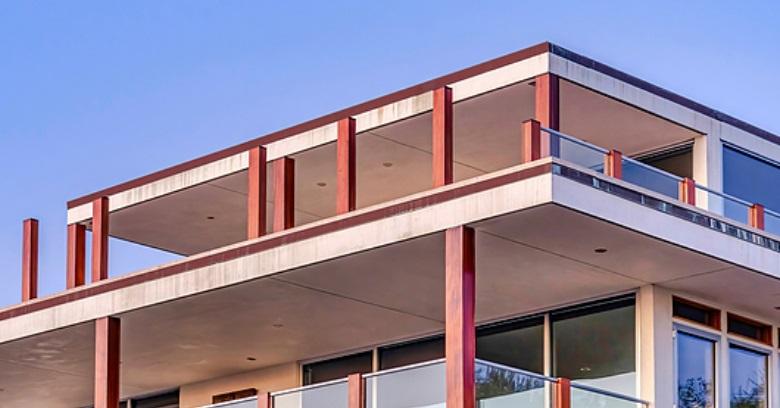Consider these great reasons to discuss plans with an experienced flat roofer before automatically deciding on the traditional pitched roof design.
1. Simple, Minimalistic Design
Flat roofs are built using a very simple design since they only require a slight angle to promote water drainage and nothing more.
They are easier to build onto a home, easier to install the roofing material on, and have a sleek, minimal design that’s useful for larger buildings and attractive as a design element for some homes and smaller buildings.
2. Easy Maintenance with Easy Accessibility
In comparison to all other roof styles, flat roofing is much easier to access and much safer to work on.
With no angles and pitches to deal with, being up on the roof is just like being on flat ground. Getting routine maintenance and inspections done by flat roofer is a breeze.
This is especially beneficial when using flat rooftop space as a rooftop garden or sitting area when regular, safe access is required.
3. More Usable Interior Space
Another great benefit that comes from choosing a flat roofs as part of the architecture of a home or building is the additional useful interior space.
Instead of ending up with reduced space due to roof construction that includes pitches and steep angles, flat installations perform like any other ceiling. Instead of an attic space, the flat architecture allows for an entire additional building level without wasted space due to roof angles.
4. Multiple Durable Installation Options
Today, there are quite a number of flat roofing installation types to fit different needs and budgets.
While Built-Up Roofing (BUR) and modified bitumen roofs are the most widely used, improved roofing technology has brought new products like single-layer membrane roofs of various kinds into use.
All of these methods are highly durable, easily maintained, and repaired by skilled flat roofers, and long-lasting when properly installed.
5. Cost-Effective
Lastly, flat roofing in comparison to roofing installations on traditional types of building architecture, tends to be more affordable, and more cost-effective over its lifetime.
It’s harder to damage and easier to repair, with many installations lasting as long as 30 years.
Additionally, this type of architecture provides added interior space, plus the ability to use the rooftop as usable space as well.
Consider A Flat Roof for Homes and Buildings
Based on these important factors, it’s easy to see how a flat roof can be beneficial over the lifetime of a building.
Homes and buildings designed with flat rooftops are easier and safer to maintain, attractive on certain building designs, allow better use of interior and exterior building space, and installations are more cost-effective throughout their service lives.
Talk to a skilled flat roofer today to plan out your building and roofing to take advantage of these great benefits.

